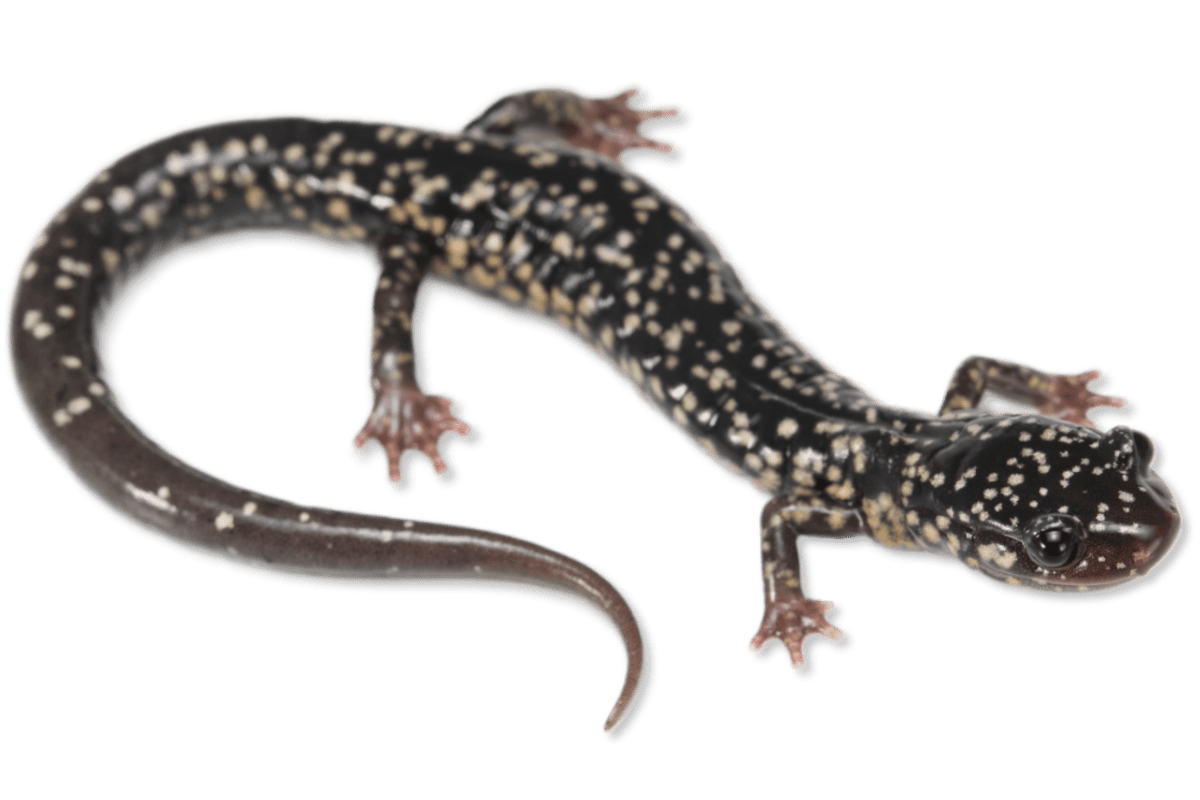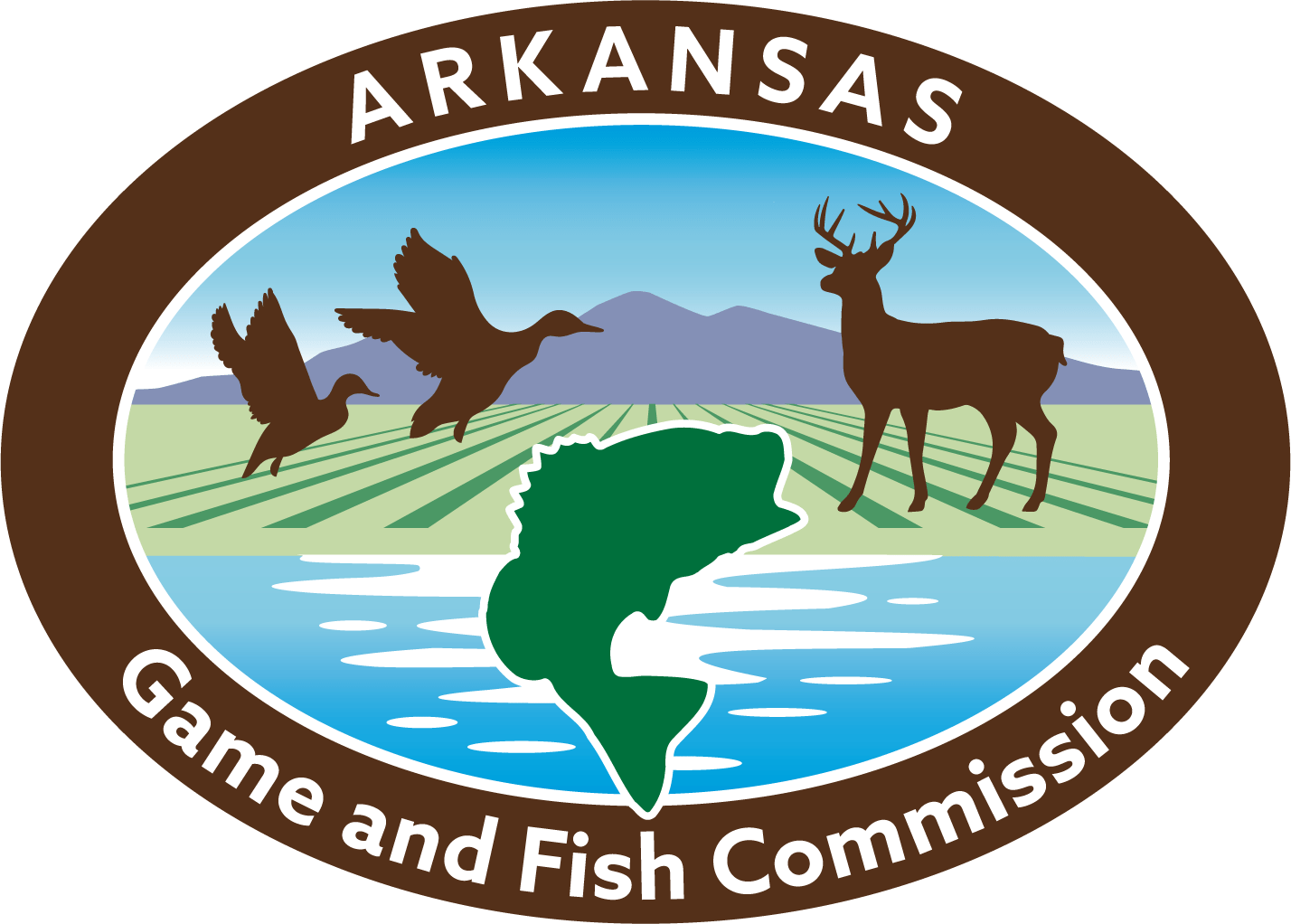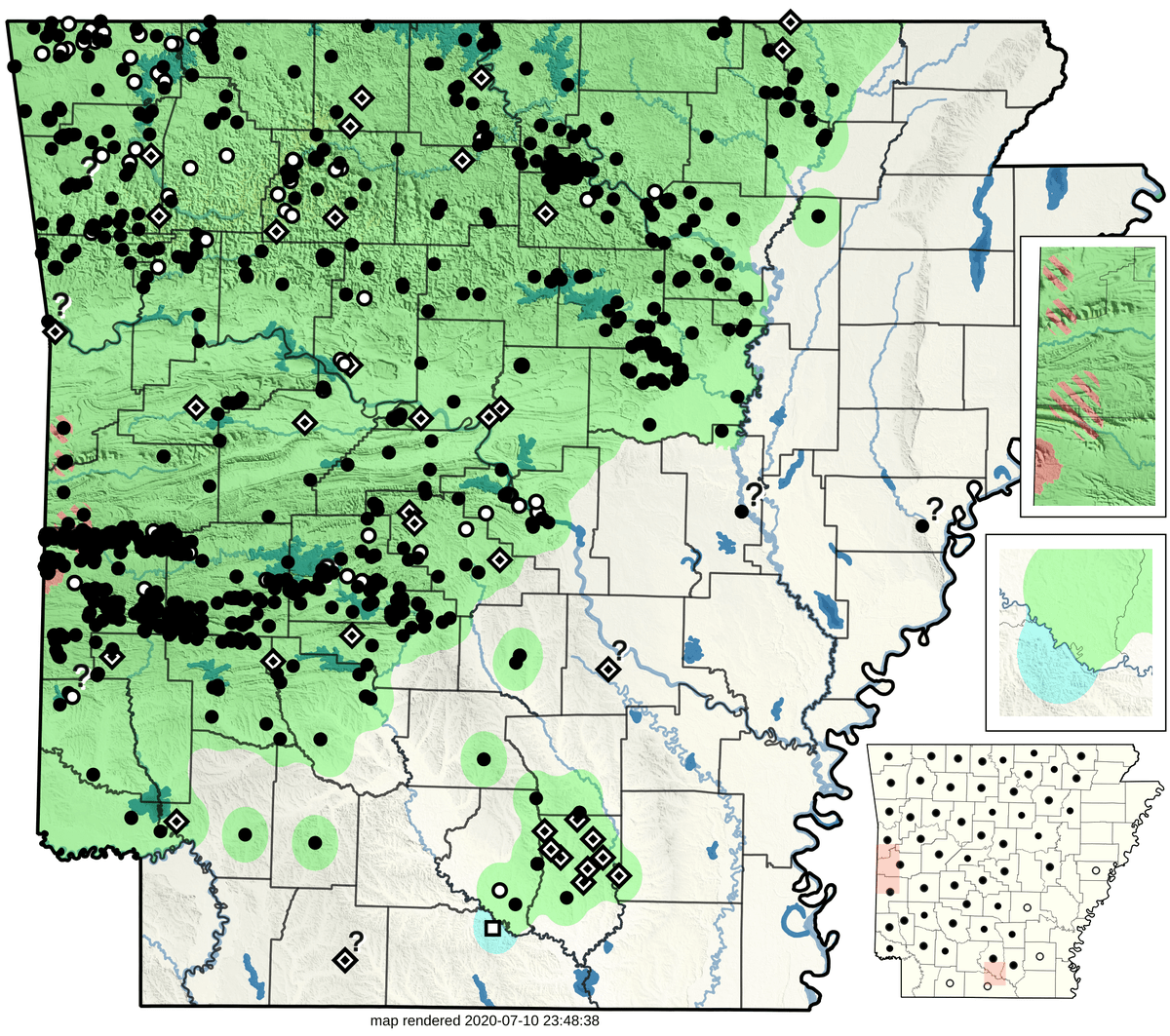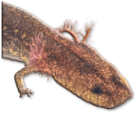
Species: P. albagula (Western Slimy Salamander), P. kiamichi (Kiamichi Slimy Salamander), and P. kisatchie (Louisiana Slimy Salamander)

Species of Greatest Conservation Need (for P. kiamichi and P. kisatchie only)
Arkansas Herpetological Atlas 2019
This species complex is represented by 2,970 records from 46 sources: 2,771 museum ( ), 1 literature (
), 1 literature ( ), 0 research (
), 0 research ( ), and 162 observation (
), and 162 observation ( ), with 36 additional Trauth et al. (2004) locality points remaining unsourced (
), with 36 additional Trauth et al. (2004) locality points remaining unsourced ( ). It has been museum vouchered for 50 of 75 counties (
). It has been museum vouchered for 50 of 75 counties ( ), with 5 additional counties having other forms of reported occurrence (
), with 5 additional counties having other forms of reported occurrence ( ). Years of collection range from 1855 to present.
). Years of collection range from 1855 to present.
This species complex occurs commonly throughout the Interior Highlands, with additional spotty occurrence in the South Central Plains. Ongoing research continues in an effort to resolve the geographic distributions and taxonomy of this species complex in Arkansas (D. B. Shepard, pers. comm.). As currently ascribed, P. albagula (■) ranges most broadly in the state. Plethodon kiamichi (■ – inset) occurs on the eastern edge of the Kiamichi Mountain range, Polk County, with spotty, isolated occurrences along the Arkansas-Oklahoma border in the Ouachita Mountains. Plethodon kisatchie (■ – inset) occurs west of the Ouachita River in extreme southern Arkansas (Highton et al., 1989), with limited genetic sampling supporting P. albagula east of the river (D. B. Shepard, pers. comm.). Plethodon sequoyah and an additional undescribed species may occupy portions of the west-southwest corner of the state (D. B. Shepard, pers. comm.). Questionable records from the Mississippi Alluvial Plain (ASUMZ 15822 from 1990 and FMNH 124798-124800, undated) warrant reexamination. Isolated localities plotted by Trauth et al. (2004) near Pine Bluff, Jefferson County, and southeast of Magnolia, Columbia County, remain unsourced. Also see P. mississippi and P. sequoyah.











































































































